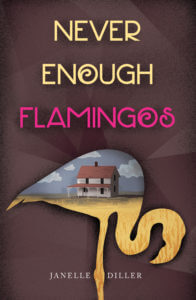

“It is a testament to Diller’s authorial strength that, through the despair, she weaves in disarming humor . . . Peopled with some enduring characters . . . this is a vivid, surprising page-turner.” ~Kirkus Reviews
It’s the Depression and it’s rural Kansas. For good measure, nature decides to throw in a Dust Bowl. It’s not the life Cat Peters would have chosen, but the young Mennonite girl doesn’t have much say in it.
Driven to the edge of bankruptcy by the relentless winds of the Dust Bowl, Cat’s family is desperate. Fortunately, wealthy Simon Yoder generously saves them with a loan. Everyone gets something more out of the arrangement than what they bargain for. Cat’s father gains a start back from the edge and the shame that he can’t provide for his family. Cat’s older brother goes to work for Simon to pay off the family debt and learns lots of new ideas. And Simon gets the debt repaid and casts a sticky net over the Peters family.
So in the end, everyone loses.
Still the rains don’t come. Without rain, there is no wheat. So Cat, too, goes to the Yoder’s to clean and cook and do whatever the hired girls do. It turns out the hired girls at the Yoder house do a lot more than cook and clean, for Simon Yoder is a man who steals the souls of young girls.
And now Cat has slipped into his hands.
Why this story? Why now?
I come from generations of Mennonites and am still one today. My mother and mother-in-law both grew up in Southwest Kansas, so for decades I’ve listened to anecdotes about the Dust Bowl and the Depression. My dad told stories, too, about what it was like to be a pacifist during World War II. All of these narratives created a wonderful fabric to weave the larger story of Never Enough Flamingos around. My sisters and in-laws will definitely recognize some of the bits and pieces of color in the story. Lest any of our friends or relatives start whispering, though, I do want to make it clear that the plot itself is completely fiction. But it all could have happened this way because Mennonites are as flawed as anybody else.
To add to the tension regarding people’s choices, I use the events in Europe and the Far East as an echo of what is happening within the Mennonite community. One of the struggles we all have—Mennonite or not—is how to confront evil at a societal or world level. It’s even more challenging to address it when it’s in our midst. I grappled with this as I wrote and did my best to stay true to Mennonite theology and culture as I understood it to be in the 1930s and 1940s.